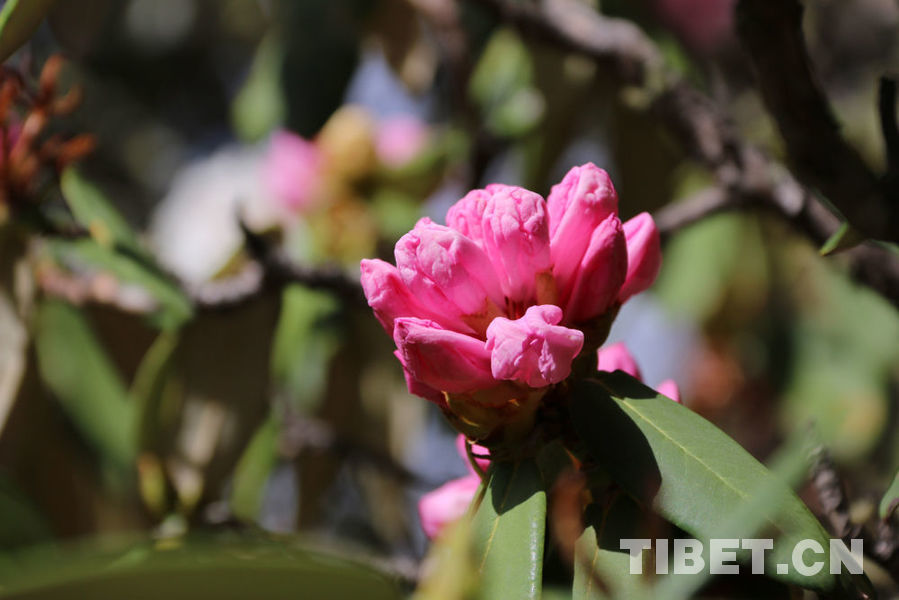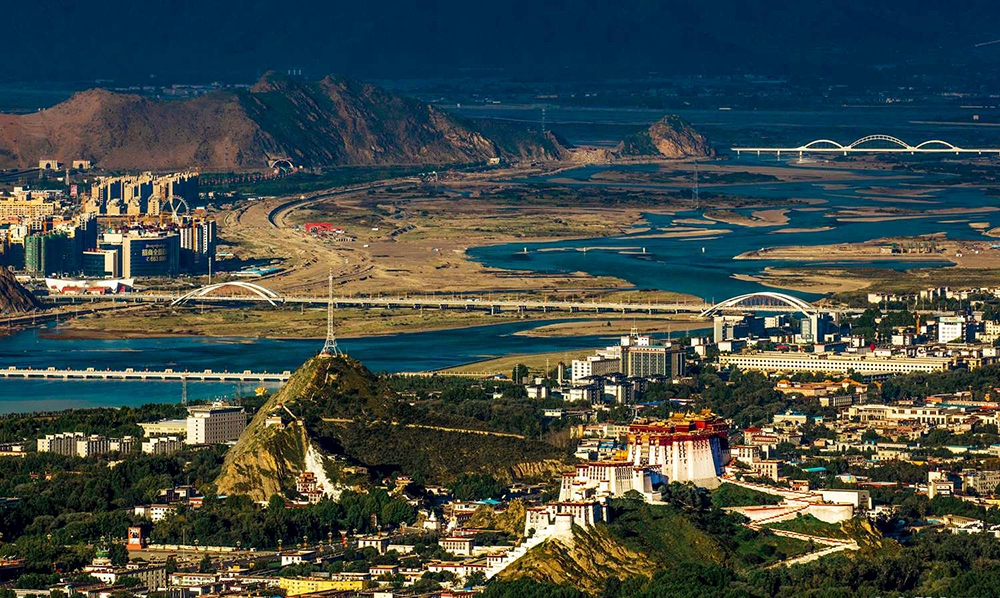Outline review on research of Tibetan-related epigraphy
In literature, epigraphy is a study of bronze and stone artefacts, particularly inscriptions and topiaries. It is not the same as archaeology, and it has not separate discipline, as it integrated with other subject. However, Jinshilu is one of the earliest catalogues and research monographs on epigraphy in China, written from the Three Ancient Dynasties to Sui, Tang, and Five Dynasties, and other dynasties, including inscriptions on bells, tripods, tombs, and other stone inscriptions. It consists of thirty volumes, most written by Zhao Mingcheng of the Song dynasty and the rest were written by his wife Li Qingzhao.
The Tibetan-related epigraphy literature is an important part of the epigraphy of China. The Tibetan people who are living on the Tibetan plateau have a long history of interaction with the surrounding ethnic groups. Tibetan-related epigraphy are widely distributed in China, and its literature are mostly distributed in Tibet, Qinghai, Sichuan, Gansu, Yunnan, and other related areas.
As a particular documentary carrier of Tibetan-related epigraphy, the carving methods and texts are unique. In terms of carving method, there are monoliths in Tibetan, Chinese or Mongolian; monoliths in Chinese and Tibetan or monoliths in Mongolian and Tibetan; monoliths in Sanskrit, Mongolian, Tibetan and Chinese (e.g. Five Pagoda Temple at Inner Mongolia and the Mani monoliths at Mount Wutai); monoliths in Manchu, Chinese, Mongolian and Tibetan; monoliths in Sanskrit, Tibetan, Mongolian and Chinese and monoliths in Chinese, mainly in Tibet, Qinghai, Gansu, Sichuan and Inner Mongolia; and monoliths in Manchu, Chinese, Mongolian and Tibetan, generally in Beijing. The monoliths in Sanskrit, Tibetan, Mongolian and Chinese are found in Tibet, Qinghai, Gansu, Sichuan, and Inner Mongolia. the combined Manchu, Chinese, Mongolian and Tibetan monoliths are mostly found in Beijing and Hebei, which is related to the historical and cultural status of Beijing and Hebei.
The document is a combination of knowledge and information recorded in words, symbols, images, and audio, etc. They were categorized into the following categories. In the context of traditional Tibetan literature, Tibetan-related literature can broadly be classified into the categories of gold and bronze inscriptions, handwritten scrolls, and bamboo slips. The first three are from the Tubo period, while the rest are primarily from the Second dissemination period to the 21st century. The Tibetan-related epigraphy literature cover both epigraphy inscriptions of the Tubo period and the rest of the Second dissemination period until the Republic of China. Therefore, it has a significant long historical period and has always been highly valued in these precious literature resources.
In October 1982, the Cultural Relics Publishing House published Wang Yao's Tubo Jinshi Lu, containing ten inscriptions and three bronze inscriptions. In 1993, the Qinghai Minzu Publishing House published Xie Zuo's Qinghai Jinshi Lu, containing more than 100 cliff inscriptions in Qinghai. In October 2001, Gansu People's Publishing House published Wu Jingshan's Gannan Tibetan Jinshi Lu, containing 120 stone inscriptions, cliffs, bell inscriptions, tile inscriptions, documents and 16 topiaries.
In April 2012, Tibet People's Publishing House published Chaga Danzheng's Studies on Tibetan Inscriptions(in Tibetan), containing a total of 103 passages of Tibetan-related bronze and stone documents from Tibet, Gansu, Qinghai, Yunnan, Beijing, and other provinces. In July 2016, the CPPCC of Aba Prefecture, Sichuan Province, published an internal publication A Collection of Aba Prefecture Inscriptions, which is segmented into surviving chapters and documentary chapters. The collection includes 255 inscriptions from various counties in Aba Prefecture, including 186 surviving inscriptions. In June 2017, Gansu Culture Publishing House published Zhouqu Jinshi Xulu written by Zheng Binglin and Ma Zhenying, which is in three parts: inscriptions, ceramics, and gold studies. These studies showed that the government and scholars attach importance to the inheritance and development of the culture of the various ethnic groups in the region along with the strengthening of the Chinese national power. These can lead to more cultural investment. Besides, they published a series of high academic valued books, which is a significant achievement.
The foreign scholars has been mainly focus on the research of inscriptions of the Tubo period instead of others. Bouchier, a British had the initial study on the Tang-Tubo Alliance Monument in the 1880s, followed by several foreign Tibetology scholars, including the British scholar Hugh Edward Richardson and others. The achievements of Hugh Edward Richardson and Li Fang-Kuei are more notable. Hugh published a number of papers in the Journal of the Royal Asiatic Society, including the Tibetan inscriptions of Zva-hi Lha Khang(1952), The rKong-po Inscription(1972), The Skar-cung inscription(1973), and A corpus of Early Tibetan Inscriptions(1985).
The American scholar Li Fang-Kuei published The Inscriptions on the Tang-Tubo Alliance Monument 821–822(1956). In 1987, Li Fang-Kuei and his student W. South Coblin co-authored a book entitled A study of the old Tibetan inscriptions, which was later translated into Chinese by Professor Wang Qilong and published in 2006. In comparison, Hugh Richardson and Li Fang-Kuei have done more research and produced better results. They may represent the highest achievement of foreign Tibetan scholars in Tibetan related inscription studies.
Historically, Tibetan society has a long history of erecting monuments to mark events. The Five Legacies of Tibetan History, written in the 8th century, contains the following story. When the Buddhist temple was completed, thousands of people gathered to freeze ice on the edge of precious stones, which were then respectfully delivered to the king. In addition, they were carved by skilled stonemasons into diamond-like hard stones. Then ground by divinely transformed stonemasons with burin knives to forge beautifully shaped monuments to record the deeds of ancestors and the legacy of the king.
This text is the earliest record I have found in the Tibetan-related document. It has demonstrated that: Firstly, the practice of erecting monuments in Tibetan society has been prevalent since the Tubo period in the 8th century, and has continued uninterrupted throughout the turbulent development of history, with a history of over 1300 years; secondly, the main purpose of erecting monuments was the same as that of the Emperor Qin Shihuang’s period, which means that they were recording the deeds of important figures, the statues of important Buddhist temples and other important events. As a special documentary carrier with such a long historical heritage, its documentary and cultural value is naturally exceptional.
(Authored by Sangding Cairen, translated by Hu Jinyang)
Tibet Stories

"Ant Team" in Lhasa Gonggar Airport
However, a group of people in white protective suits never stop shuttling between the tarmac...

